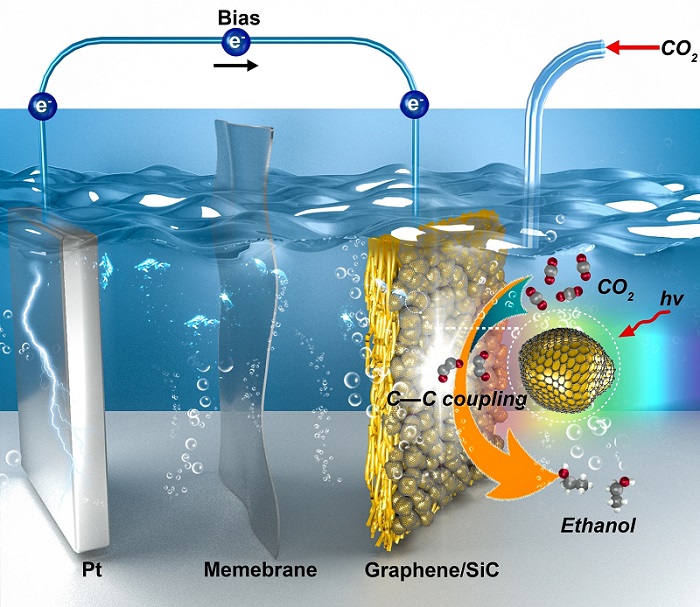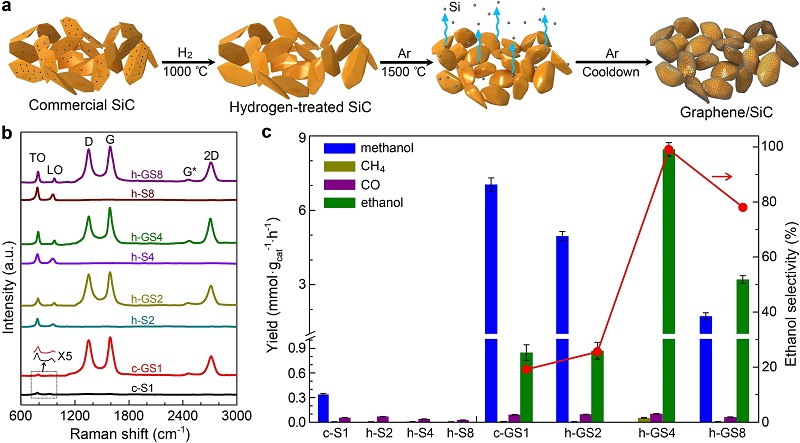Research Progress
Researchers Developed a Novel Graphene/Silicon Catalyst for Highly Selective Photoelectroreduction of Carbon Dioxide to Ethanol
date:
2023-03-20
Using sunlight to produce valuable chemicals and fuels from carbon dioxide (CO2), i.e., artificial photosynthesis (AP) is a promising strategy to achieve solar energy storage as well as a negative carbon cycle.
However, the AP is quite complex and involves multiple sequential and parallel steps. What’s more, thermodynamically favorable C1 products can be produced from multiple AP intermediates, making it challenging to selectively produce target chemicals containing C-C bonds. Therefore, selective synthesis of C2 compounds with a high CO2 conversion rate remains challenging for current AP technologies.
Motivated by such a challenge, a research team led by Profs. CHEN Wei and WEI Wei from the Shanghai Advanced Research Institute (SARI) of the Chinese Academy of Sciences reported efficient CO2 photoelectroreduction to ethanol (C2H5OH) over graphene/silicon carbide (SiC) catalysts under simulated solar irradiation with ethanol (C2H5OH) selectivity of >99% and a CO2 conversion rate of up to 17.1mmol gcat-1h-1.
The results were published in Angew. Chem. Int. Ed.
A graphene/silicon carbon (SiC) composite catalyst, which comprises a SiC substrate, interfacial layer (IL), and few-layer graphene overlayer can help to achieve the precise control of active intermediates for C?C coupling. An optimal IL structure allows photogenerated electrons from the SiC substrate to be facilely transferred to the active sites on the graphene overlayer. Reaction intermediates can then be efficiently formed and stabilized owing to their strong adsorption at the active sites and the high electron density of the graphene surface.
Experimental results and first principles calculations show that CH3OH formation is largely suppressed in favor of C-C coupling. C2H5OH is therefore exclusively formed with a selectivity of>99% and a CO2 conversion rate of 17.1mmol gcat-1h-1 under simulated solar irradiation with a small bias (-50 mV bias vs. Ag/AgCl) and ambient conditions. Thus, the photoelectrocatalytic performance of the optimal catalyst in producing C2 products from CO2 was at least two orders of magnitude higher than those of the state-of-the-art AP catalysts.
This work paves the way toward an advanced AP strategy to efficiently valorize greenhouse CO2.

Figure1. Schematic diagram a for highly selective photoelectroreduction of carbon dioxide over graphene/silicon carbide composites (image by SARI)

Figure 2. Synthetic Scheme, Raman spectra and CO2 photoelectrocatalytic performances. (image by SARI)





